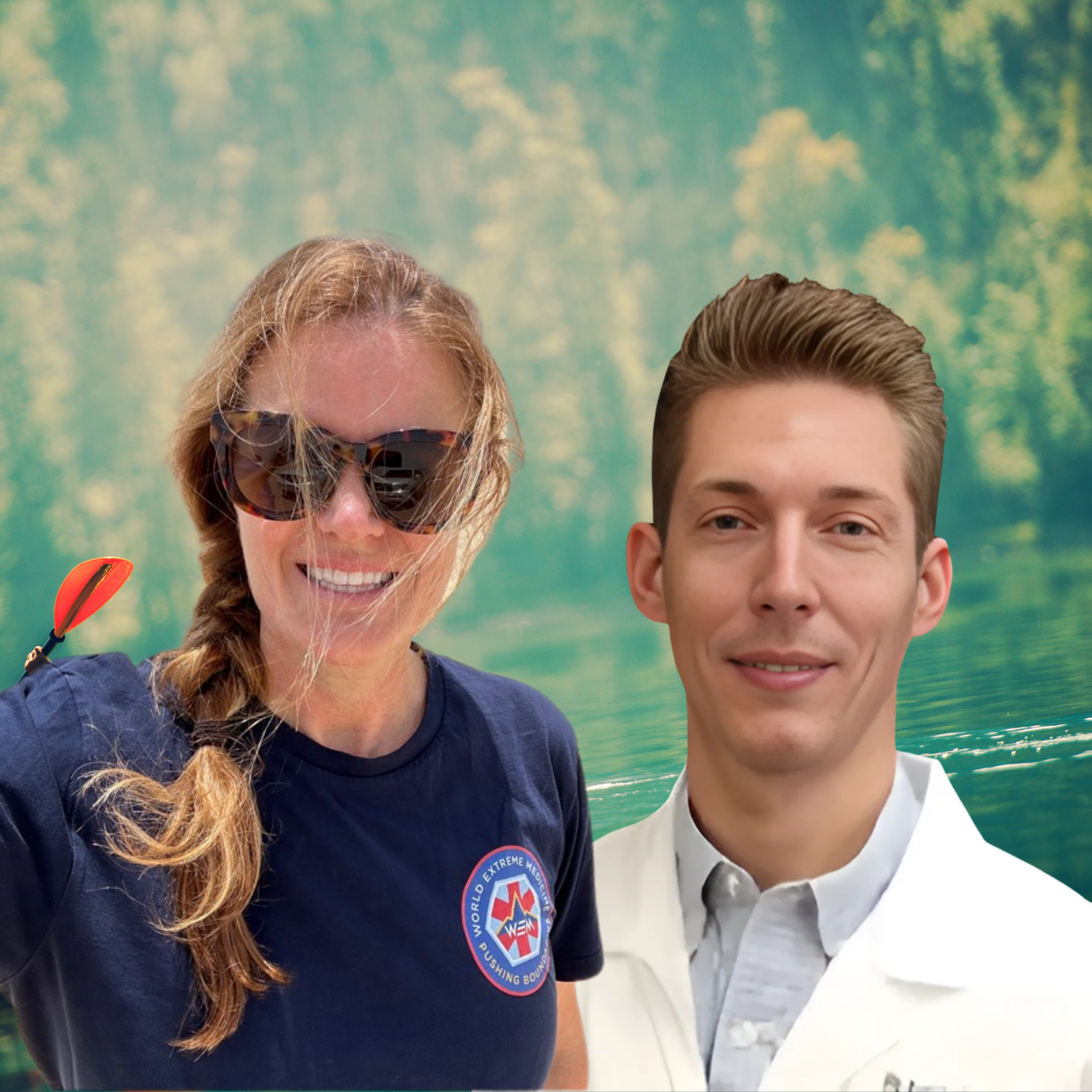What do you do when someone dislocates a shoulder in the middle of nowhere?
In the latest episode of the World Extreme Medicine Podcast, Sarah Spelsberg and Robert Knopp break down exactly that. Drawing from real-world experience in remote settings, they explore how to manage a shoulder dislocation when professional care is out of reach, and when (if ever) to attempt a reduction in the field.
Whether you’re a wilderness medic, outdoor professional, or expedition leader, the insights shared in this episode could make a real difference when it counts.
The First Rule: Don’t Rush to Reduce
If there’s a chance to get medical help — take it.
“Go to hospital if you can. Get it done by trained professionals with appropriate pain control. That’s the best and safest option,” says Robert.
But in the wild, that isn’t always possible. If extraction is delayed due to terrain, weather, or distance, a field reduction may be your only option. It’s not a decision to take lightly, but under the right circumstances, it can provide meaningful relief.
Four Field Techniques for Shoulder Reduction
Robert outlines four options, ranging from clinically recognised methods to field improvisations. Which one is appropriate depends on the environment, the equipment you have, and the patient’s condition.
1. The Davos Technique (Self-Reduction)
Best for solo situations
-
Sit with knees bent, feet flat on the ground
-
Interlace fingers around your shins
-
Lean back slowly, using body weight to create sustained traction
This method is supported in clinical literature, especially for anterior dislocations, and is a go-to in military and solo adventure settings.
2. Improvised Pulley with Cordage
Creative, but not clinically endorsed
Using climbing rope or webbing, some paddlers create mechanical advantage systems to aid reduction, especially when working alone or without external help. While not a standard medical technique, it’s an example of wilderness problem-solving when evacuation is impossible.
3. Using Climbing Nuts as Anchors
For technical terrain
In challenging landscapes where natural anchors are scarce, climbers have used nuts or passive protection gear to create stable setups for self-traction techniques. Again, this isn’t found in clinical guidelines but reflects real-world adaptation.
4. Stimson’s Technique (Gravity-Based)
Clinically recognised, sedation-free
-
Patient lies face down
-
Injured arm hangs freely off a platform (e.g. log or table)
-
A weighted object (like a dry bag filled with water) is attached to the wrist
Gravity does the work over time. This method is recognised in emergency medicine and may be an option when sedation or support is unavailable.
How to Decide Whether to Attempt a Field Reduction
Before doing anything, assess for the following:
-
Obvious deformity at the shoulder
-
Loss of normal movement
-
Numbness, tingling, or weak/no pulse
-
Grinding or crepitus (suggests fracture)
If any of these signs are present, do not attempt a reduction. Stabilise and prioritise evacuation.
Kit Recommendations: What to Carry for Wilderness Shoulder Injuries
Robert recommends packing the following in your first aid kit:
-
Athletic or climbing tape
-
Duct tape or Gorilla Tape (multi-use, even as kindling)
-
Flex Seal (for boats/gear, not shoulders!)
-
Climbing cord or webbing (min. six feet)
-
Two auto-locking carabiners
-
Lightweight climbing nuts or passive pro
-
SAM splint
-
Throw rope
-
Super glue (for skin cracks or minor wounds)
Bonus extras for general field use:
-
Pencil sharpener (to make dry kindling)
-
Vaseline-soaked lint (emergency fire-starter)
Injury Prevention Tips for Paddlers
For kayakers, whitewater paddlers, and canoeists, the following strategies reduce risk of shoulder dislocations:
-
Keep arms in front of the body and elbows below shoulder height
-
Avoid high-bracing techniques
-
Build core strength and rotate the torso for propulsion
-
Don’t overreach or ‘lazy paddle’
-
Progress gradually between river grades, injuries spike when paddlers overcommit
These tips are supported by sports medicine research and widely echoed across the paddling community.
Making the Call: Reduce or Evacuate?
Robert suggests weighing two main factors:
-
Pain: How much is the patient suffering?
-
Exposure: How long will it take to get them out?
“If it’s going to take days to get out and the person is in significant pain, that’s when you might consider it. But you need to weigh that against the risk of nerve or vascular injury.”
Also worth noting:
-
First-time dislocations are harder to reduce
-
They’re more likely to involve fractures
-
Time matters: the longer it’s dislocated, the harder it becomes to reduce
Final Thoughts
A dislocated shoulder in the backcountry is more than just a medical issue — it’s a logistical, physical, and decision-making challenge.
The techniques shared here aren’t replacements for professional care, but in certain conditions, they can provide temporary relief, mobility, and buy you time. As always, preparation is everything. Know your tools. Know your limits. And train for the unexpected.
→ For more information on expedition medicine training and field skills courses, visit our website!

